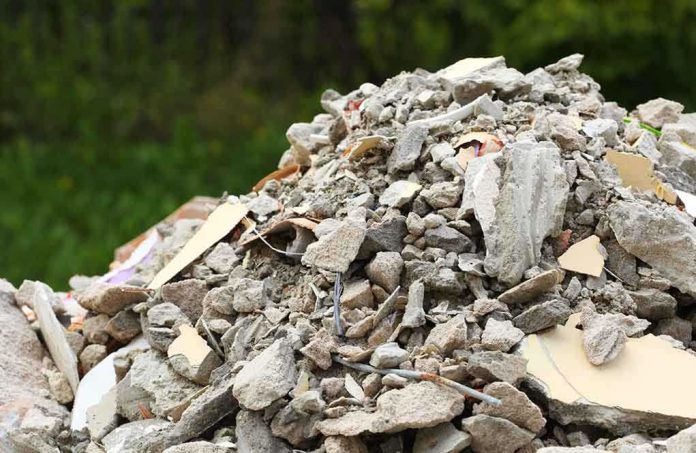
A new, privately funded White House ballroom project raises eyebrows as construction advances without full regulatory approval.
Story Highlights
- White House East Wing demolition begins to make way for Trump’s $250 million ballroom.
- Project proceeds without full National Capital Planning Commission approval.
- Funded entirely by private donors, avoiding federal shutdown impacts.
- Potentially sets a precedent for future private funding of public buildings.
White House Ballroom Construction Sparks Controversy
In a move that has captured national attention, the White House initiated the demolition of the East Wing to construct a new, expansive ballroom. The project, championed by President Donald Trump, is funded by private donors, allowing work to continue despite a federal government shutdown. Aimed to accommodate nearly 1,000 guests, the ballroom significantly exceeds the capacity of the current East Room. However, the project faces criticism for bypassing full approval from the National Capital Planning Commission (NCPC), raising concerns about regulatory adherence and preservation of historic sites.
Private Funding Fuels Construction Amid Shutdown
The ballroom project, entirely financed by private contributions, moves forward unaffected by the ongoing federal shutdown. President Trump has long envisioned a modern, larger event space at the White House, and this project is set to fulfill that vision. The reliance on private funding has sparked a debate about the implications of such a financial model for public landmarks. Critics argue this sets a risky precedent, potentially leading to increased private influence over national symbols. Supporters claim it demonstrates resourcefulness in an era of governmental gridlock.
Historical Integrity vs. Modernization
The decision to partially demolish the historic East Wing has ignited discussions among preservationists and historians. Many are concerned about the impact on the historical integrity of the White House complex. The new ballroom, boasting lavish interiors with chandeliers and bulletproof glass, represents a significant architectural shift. While the White House asserts the project respects the building’s heritage, experts remain skeptical about the timeline, which aims for completion before the end of Trump’s term in 2029.
White House’s East Wing Partially Demolished to Build Trump’s Ballroom – The New York Times https://t.co/k1ik61T9tT
— DANVZLA (@danvzla) October 21, 2025
Beyond regulatory and historical debates, the ballroom project reflects broader political dynamics. Democrats criticize the timing, pointing to the ongoing shutdown and its impact on federal workers. They argue the prioritization of the ballroom over essential government functions highlights skewed Republican priorities. Meanwhile, Republicans generally support the project, viewing it as a beneficial addition to the White House’s capabilities.
Sources:
White House State Ballroom Wikipedia
White House Announces Ballroom Construction











